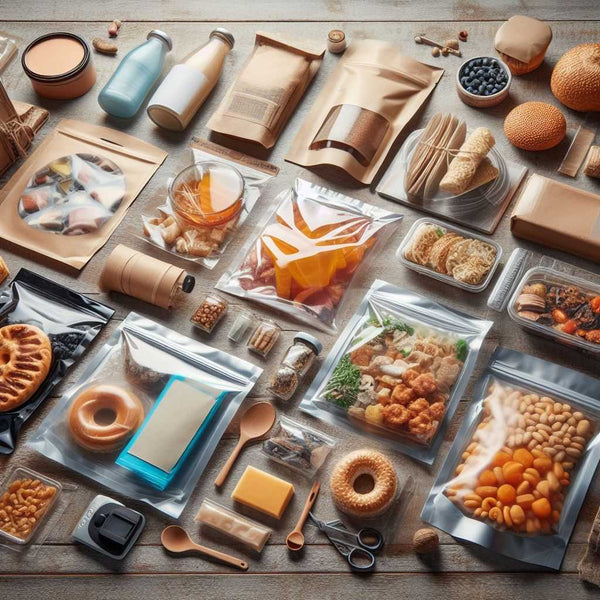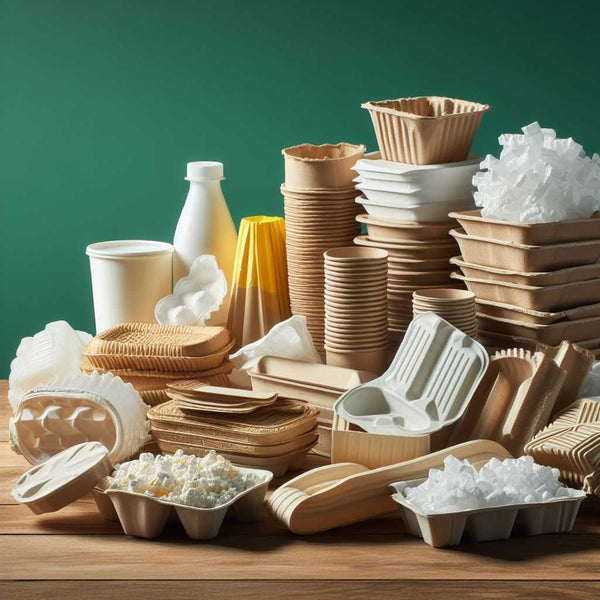Balancing Cost & Quality: Cost-effective Food Packaging Solutions
In the highly competitive food industry, brands face dual pressures: strict cost control, where every penny must be spent wisely; and the harsh market reality that shoddy packaging often means losing consumers. It seems like an unsolvable dilemma: pursuing cost savings often requires sacrificing quality, while chasing quality pushes budgets out of reach.
When talking to most startup and small-to-medium-sized brands, this pain point is mentioned most frequently. We firmly believe that excellent food packaging is not an extra expense for brands, but the first bridge to communicate with consumers and a tangible reflection of brand value. So, how to build this sturdy yet attractive bridge within a limited budget? MTPAK hopes to share our insights and practices.
What Are the Core Needs for Small-to-Medium Brands’ Packaging?
Unlike ordinary products, food packaging undertakes more complex missions. Your goal is never just to "wrap the product":
l Safety and freshness as the bottom line
Packaging must protect food from contamination and effectively block light, oxygen, and moisture to maximize shelf life—this is the most basic commitment to consumers.
l Strong shelf appeal
In offline supermarkets or online product pages, packaging needs to catch consumers’ attention within 1-2 seconds, clearly convey product category and selling points (e.g., "organic," "crunchy," "fresh with short shelf life"), and stimulate purchase desire.
l Extreme cost control
The food industry has limited profit margins, so packaging costs must be precisely manageable. Any unnecessary waste will directly erode profits.
l Agile supply chain response
Food has a shelf life, and market trends change rapidly. Packaging production and delivery must be fast and flexible to keep up with your sales rhythm and marketing timelines.
How to Solve the "Cost Reduction" and "Quality Enhancement" Dilemma for Food Brands?
Given the uniqueness of the food industry, we need systematic optimization across structure, materials, processes, and supply chain to implement a "four-in-one" high-cost-performance strategy for food packaging:
1.Structural Optimization: An excellent food packaging structure means less material, stronger protection, and better user experience
(1)Reduction & damage-proof design: Create customized designs based on product forms (e.g., fragile cookies, fluffy cakes, liquid sauces). By optimizing the structure, we reduce material usage while ensuring compression and shock resistance.
(2)Standardization & convenience: Recommend mature standardized pouch/box types to significantly lower mold opening costs. Meanwhile, prioritize user experience by designing easy-tear notches, resealable zippers, and easy-pour spouts. These small improvements boost product reputation without high costs.
2.Smart Material Selection: The choice of food packaging materials directly impacts safety, freshness retention, and cost
(1)"Just-right" barrier protection: We never blindly recommend the most high-end materials. For example, dry goods and candies insensitive to oxidation can use high-quality food-grade kraft paper or single-material plastic—cost-effective and naturally styled. For coffee, nuts, and meat snacks requiring high barrier properties, we recommend the most cost-effective aluminum-plated films or composite films with specific structures to avoid performance waste.
(2)Using "food-grade" eco-friendly materials: For brands focused on sustainability, we offer eco-friendly solutions such as PLA (polylactic acid), kraft paper, and recycled pulp molding. Through large-scale procurement, we lower usage costs. Meanwhile, we clearly inform customers of each material’s recycling path and eco-attributes to make "green claims" credible.
3.Process Balance: When budgets are limited, making packaging "look appetizing" is key
(1)Design empowerment for simple freshness: Suggest visual styles that align with food properties. For example, warm hand-drawn illustrations for baked goods, and fresh large color blocks for healthy foods. Simplifying the number of printing colors and using spot colors or large white spaces can create a premium feel while directly reducing printing costs.
(2)Sensory highlights with low-cost processes: Use partial UV coating on key brand information to simulate the sheen of syrup or oil, or embossing to make bread/fruit patterns 3D. These low-cost processes strongly stimulate consumers’ visual and tactile senses, evoke associations with delicious food, and enhance "appetite appeal."
4.Supply Chain Integration: Achieving bulk purchase prices
The food industry often has flexible needs such as peak-season stockpiling, holiday gift boxes, and new product trials. By integrating a strong food packaging supply chain network, we achieve:
(1)Bulk purchasing advantages for materials: Secure better raw material prices.
(2)Flexible production scheduling: Rapidly respond to urgent orders and small-batch orders, helping you reduce inventory risks and accelerate capital turnover.
How to Quantify the Impact of Food Packaging Upgrades?
1.Cost & efficiency metrics
(1)Unit packaging cost reduced by 10%-25% (via structural and material optimization).
Prototyping and mold costs saved by up to 50% (via standardized box/pouch application).
(2)Average production and delivery cycle shortened by 20%, helping you seize market
opportunities quickly.
2.Quality & market metrics
(1)Packaging damage rate reduced to below 0.5% (thanks to scientific protective structures).
(2)Packaging barrier performance meets standards, significantly reducing shelf-life loss rates.
(3)All materials pass third-party testing to comply with national food contact material safety standards.
(4)Through user surveys and social media monitoring, the proportion of positive feedback (e.g., "high-quality," "premium-looking," "memorable") about packaging increases significantly.
What New Heights Can the Brand Reach in the Future?
The full implementation of food packaging solutions will lay a stronger, more competitive foundation for your brand:
Stronger terminal competitiveness: Products stand out on shelves, winning consumer trust with excellent "appearance" and safety, and achieving higher conversion rates.
Healthier and more stable profit model: Optimized packaging costs are directly converted into higher gross margins, giving you more resources to invest in product R&D and marketing.
More solid brand equity: Consistent, high-quality packaging experiences continuously strengthen the brand’s professional image in consumers’ minds.
A more reliable long-term partner: MTPAK is not just your packaging supplier, but a co-builder of your brand. As an extension of your brand, we will grow with you, providing comprehensive support from packaging trends and technical upgrades to supply chain guarantees.
Conclusion
In short, cost and quality have never been an either-or choice—they are a comprehensive problem that requires professionalism, experience, and resources to solve. Solving packaging challenges for food brands is what MTPAK focuses on and excels at. We help growing food brands remove obstacles, so you don’t have to compromise between dreams and reality.
Because we all believe that the best flavors deserve to be presented in the best way. Now, let’s start with an in-depth conversation to jointly design a cost-effective food packaging path to success for your delicious business.
Looking for more food packaging solutions? Feel free to contact us:
Email:account@mtpak.com
Contact us:https://mtpak.com/contact-mtpak



